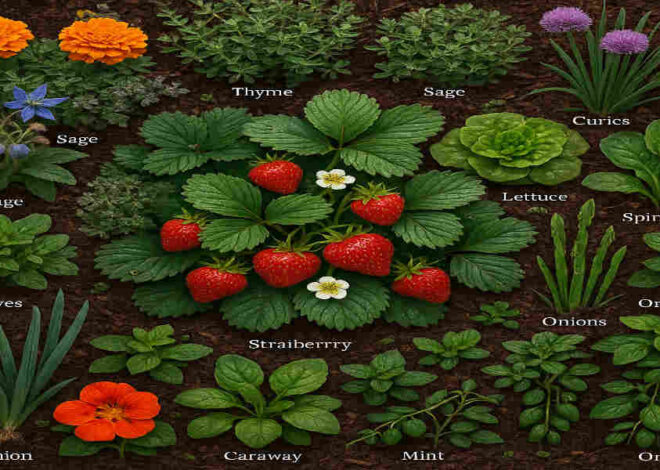
Best Vegetables to Grow in Partial Shade for Your Home Garden
Gardening in shaded areas often presents unique challenges because of the common misconception that all vegetables need full sun to thrive. However, many gardeners might not realize the potential of vegetables that grow in shade. These plants can survive and flourish under less direct sunlight, offering a fantastic opportunity to efficiently utilize every corner of your garden.
Understanding Shade in the Garden

Types of Shade Explained
Understanding the different types of shade is crucial for successful gardening. Full shade refers to areas that receive no direct sunlight; partial shade means areas that get 2-4 hours of direct sunlight per day, and dappled shade occurs under the canopy of open trees, providing a pattern of the sun and shade. Assessing how much sunlight your garden receives is vital and can be done using a sunlight calculator or simply observing the light during the day.
Why Some Vegetables Thrive in Shade
Some vegetables thrive in shade because of the science of photosynthesis and shade tolerance. Certain vegetables can photosynthesize efficiently in less intense light without the stress that full sun can bring. This can lead to advantages such as reduced bolting (premature flowering) and cooler soil temperatures, which benefit root development and slow-growing crops.
How Many Hours of Sunlight Do Shade Vegetables Need?
Shade-tolerant vegetables typically require about 2-4 hours of sunlight per day. Tips for measuring sunlight in your garden include using a sun map or a sunlight meter to help you plan where to plant specific vegetables effectively.
Benefits of Growing Vegetables That Grow in Shade
Growing vegetables in shaded parts of the garden can maximize underutilized spaces, allowing for an extended harvest period, particularly with cool-season crops. These areas also tend to have reduced risks of pests and diseases due to cooler temperatures and less direct sunlight. Additionally, shaded areas often need less watering due to lower evaporation rates.
Top 15 Vegetables That Grow in Shade
For gardeners looking to maximize their yield in shaded areas, here are the top 15 vegetables to consider, along with their sunlight needs, growing tips, and culinary uses:
| Vegetable | Sunlight Needs | Growing Tips | Culinary Uses |
|---|---|---|---|
| Lettuce | 3-4 hrs/day | Loose-leaf types best; succession sowing | Salads, wraps |
| Spinach | 3-4 hrs/day | Prefers cool, moist soil; shade delays bolting | Salads, sautés |
| Swiss Chard | 3-4 hrs/day | Give space, good air flow; harvest outer leaves | Stir-fries, soups |
| Arugula | 2-4 hrs/day | Fast-growing, prefers cooler temps | Salads, pizza topping |
| Kale | 3-4 hrs/day | Cold-hardy, slow to bolt in shade | Smoothies, chips |
| Bok Choy | 2-4 hrs/day | Succession sowing; tolerates cool, shady spots | Stir-fries, soups |
| Mustard Greens | 2-4 hrs/day | Harvest young for tender leaves | Salads, sautés |
| Collard Greens | 2-4 hrs/day | Slow to bolt in shade; harvest outer leaves | Southern dishes, stews |
| Mâche (Corn Salad) | 2-3 hrs/day | Thrives in cool, damp shade | Salads, sandwiches |
| Beets | 3-4 hrs/day | Both roots and greens edible | Roasted, salads |
| Turnips | 3-4 hrs/day | Fast-growing, edible greens | Roasted, soups |
| Radishes | 3-4 hrs/day | Quick crop, prefers cool, moist soil | Salads, pickles |
| Celery | 3-4 hrs/day | Prefers moist, shady spots; tender stems | Soups, snacks |
| Herbs (Parsley, Cilantro, Chives, Mint, Dill) | 2-4 hrs/day | Most tolerate shade, regular harvesting promotes growth | Culinary uses, garnishes |
| Garlic | 3-4 hrs/day | Plant in fall; cure in shade after harvest | Cooking, seasoning |
Honorable Mentions: Other Shade-Tolerant Vegetables
Additional vegetables that tolerate shade include rhubarb, tatsoi, claytonia, cress, leeks, and scallions. Shade-tolerant herbs are oregano, lemon balm, thyme, sage, and rosemary, which can enhance your shaded garden’s productivity.
How to Maximize Yields in Shady Gardens
Soil Preparation
Rich, well-draining soil is key for growing vegetables in shade. Adding compost and organic matter can improve soil fertility and structure, enhancing plant growth and yield.
Water Management
Shady gardens often retain moisture longer, which can be beneficial, but careful watering practices are required to avoid over-saturation and root diseases.
Spacing and Air Circulation
Proper spacing and air circulation are essential to prevent fungal diseases common in cooler, shaded areas.
Reflective Mulches and Surfaces
Using light-colored mulch or reflective surfaces can help increase the amount of light available to plants, boosting photosynthesis and growth.
Container Gardening in Shade
Containers offer the flexibility to move plants around to optimize light exposure, an excellent strategy for gardening in shaded conditions.
Common Challenges and Solutions for Growing Vegetables That Grow in Shade
While growing in shade can reduce pest and disease incidence, it may also lead to slower growth rates and potential light deficiencies. Managing these challenges involves adjusting plant varieties and spacing and supplementing with artificial light sources if necessary.
Design Ideas: Planning a Productive Shade Vegetable Garden
Practical layout and design strategies, such as companion planting and vertical gardening, can maximize light exposure and space, enhancing the productivity of a shade garden.
Conclusion
Growing vegetables in the shade can be advantageous and efficient, allowing gardeners to make the most available space. By selecting the right vegetables and employing strategies to maximize light and soil quality, even the shadiest garden can produce a prolific and diverse harvest. Experiment with different plants and techniques to find what works best in your shady garden spaces, and don’t hesitate to reach out with comments or questions to explore the enriching world of shade gardening further.
You may also read (8 best broccoli companion plants for a thriving garden in 2025)


